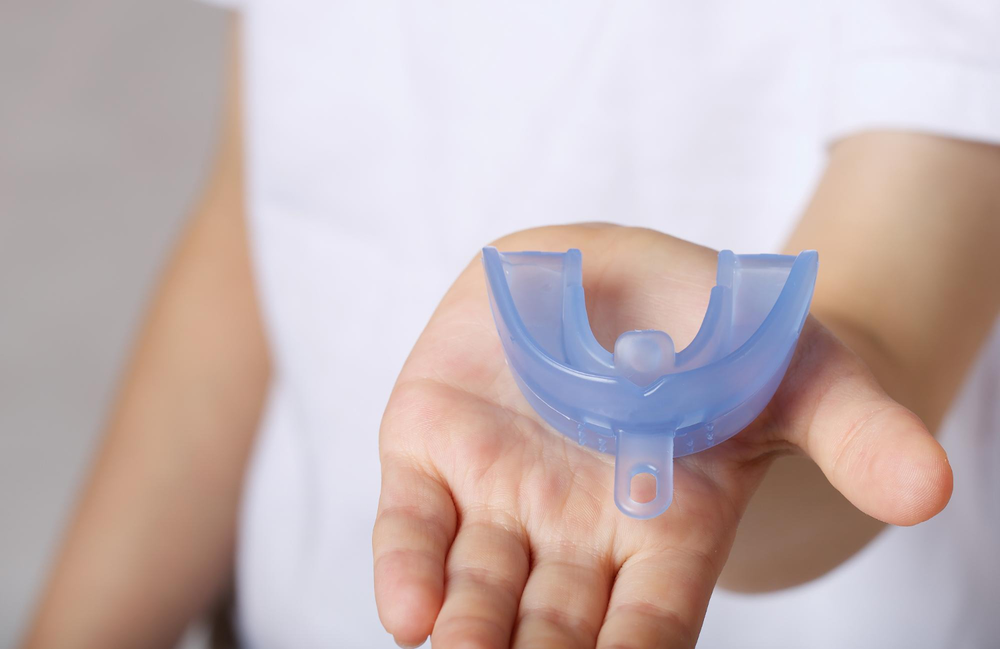If you’re an athlete with braces, staying active on the field comes with a unique set of challenges, and protecting your teeth should be at the top of your list. Whether you’re running across a soccer pitch, diving for a rugby try, or leaping to catch a basketball, the risk of dental injury increases when you have braces. That’s where a mouthguard for braces becomes essential. It acts as a protective barrier, shielding your teeth, gums, and the brackets on your braces from impacts that could otherwise lead to cuts, fractures, or damaged orthodontic work.
Beyond the obvious protection, a well-fitted mouthguard allows you to play with confidence. It absorbs shocks and distributes force evenly, preventing injuries that could set back both your sporting performance and orthodontic progress. Athletes often overlook this crucial gear, but dental professionals emphasise that a mouthguard is just as important as your sports kit when braces are involved.
Investing in the right mouthguard ensures comfort, safety, and peace of mind every time you step onto the field. A mouthguard for braces in Ipswich not only protects your teeth but also supports your overall performance by letting you focus entirely on the game without worrying about injuries. Whether you’re training at your local club or competing in a school tournament, wearing the correct mouthguard is a small step that makes a big difference.
Why Athletes with Braces Need a Mouthguard
Even though braces help align teeth, they don’t make you tougher on the field. In fact, braces can actually increase injury risk to soft tissues. If you take a hit, metal brackets can cut your lips or cheeks. A mouthguard forms a barrier around braces to prevent cuts and lessen the force on teeth. Without a mouthguard, blows to the face can cause fractures, knocked-out teeth, or damage to the jaw.
A properly fitted sports mouthguard absorbs shocks and keeps teeth (and braces) from colliding with the lips or each other. Custom mouthguards absorb and spread out impact far better than teeth alone. In short, even with braces on, wearing a mouthguard is essential, as it dramatically reduces the chance of dental injuries during sports.
According to Oral Health Victoria guidelines, any contact sport demands a mouthguard. For example, Rugby League, AFL, hockey, basketball, or martial arts all carry a high risk of blows to the face. Queensland and Australian clubs often enforce a strict “No Mouthguard, No Play” policy to protect athletes. In Ipswich’s sporty community, wearing a mouthguard whenever you’d normally use one is the rule of thumb, especially if you have braces.
Types of Mouthguards for Braces
Not all mouthguards are created equal. You can choose from stock, boil-and-bite, or custom options, but they vary in fit and protection. In general, custom-fitted orthodontic mouthguards (made by a dentist or orthodontist) are the gold standard. They are molded precisely to your teeth and braces, offering the best shock absorption and comfort.
| Type | Fit & Comfort | Protection Level | Suitable for Braces? |
| Stock (ready-made) | Generic one-size (often bulky & loose) | Low (prone to slipping) | Not recommended (poor fit) |
| Boil-and-bite | Moldable at home (clamp over teeth) | Medium (better than stock) | Can work, but adjust as teeth move |
| Custom (Orthodontic) | Tailored by a dentist to the exact shape | High (best cushion & fit) | Ideal – fits braces perfectly |
Ready-made guards (the cheapest kind) are bulky and poorly fitted. Boil-and-bite guards improve on fit by softening plastic in hot water, but they can thin out and lose protection.
A custom orthodontic mouthguard is molded to fit snugly over braces and teeth. This ensures a secure, comfortable fit even as your teeth move. In contrast, stock guards simply sit loosely in the mouth, which is unsafe for braces-wearers. Custom-made mouthguards provide the best protection, fit, and comfort. They also prevent the mouthguard from dislodging if you collide with another player.
Playing Safe: Sports Mouthguards for Braces
Sports like rugby, soccer, basketball, and even netball all carry risks of getting elbowed or hit by a ball. In Ipswich and around Australia, it’s standard for kids and adults to wear mouthguards during these games. The mouthguard for braces you choose should be suitable for the contact level of your sport. For example:
- Team contact sports (e.g., rugby league, AFL, soccer, hockey, basketball): Definitely wear a mouthguard for braces. Many of these sports make mouthguards mandatory during play.
- Martial arts or combat sports (e.g., MMA, boxing, karate): A double mouthguard (top and bottom) is often used for maximum cushion. Brace-wearers should always use one, since falls or strikes to the face are common.
- Recreational activities (e.g., skateboarding, bike riding, horse riding): Even non-contact falls pose risks to teeth. Professionals advise wearing a mouthguard in any activity where you might hit your face.
Experts stress, never play sports with braces without a mouthguard. A mouthguard shields not only the teeth but also the jaw joints and neck by absorbing impact forces. In Ipswich’s schools and clubs, coaches often check that all players have mouthguards before letting them train or compete.
Fitting and Comfort: Getting the Right Mouthguard
A mouthguard only works if it fits well. For braces, you need an orthodontic mouthguard designed to accommodate brackets and wires. The best fit is achieved by seeing your orthodontist or dentist. They will take an impression of your teeth and braces, then craft a custom silicone guard that fits the mould of your braces and brackets for maximum comfort. These custom guards can be reheated and remolded at adjustment visits so they stay snug as your teeth shift.
Comfort is key to wearing a mouthguard consistently. A poorly fitting guard can slip, gag, or make it hard to breathe. Cheap, one-size guards are often too bulky and can get in the way of your breathing and ability to speak. In contrast, a well-fitted custom mouthguard allows normal breathing and talking so you can stay focused on the game.
Athletes with braces should look for features like a soft inner lining and flexibility. The guard should sit securely on top teeth, with enough room to fully enclose the brackets. Some people add a small bit of wax over their braces before fitting to ease insertion. Always check that the guard covers all brackets and doesn’t distort your bite.
In practice, slip the mouthguard into your mouth before every play, and remove it gently (braces can snag on a guard if pulled). Carry a spare case to keep it clean. If the guard feels loose or causes pain, stop using it until it’s refitted. When adjusted correctly, you should hardly feel it, just the confidence that your teeth are protected.
Caring for Your Mouthguard
To keep that mouthguard effective: treat it like a prized piece of gear. Rinse it in cool water before each use, and after use, clean it gently with a toothbrush or mild soap. Never use hot water; it can warp the plastic. After drying, store the guard in a ventilated case (avoid heat and direct sun) to prevent distortion. Inspect it regularly: if you see cracks, tears, or if it no longer fits well (for example, after orthodontic adjustments), replace it.
Here are simple care steps:
- Clean daily: Rinse with cool water after each wear, brush lightly with a soft toothbrush and gentle soap, then rinse.
- Air dry: Shake off excess water and let the guard air out completely before storing it.
- Store properly: Keep it in a hard plastic case with vents. This avoids germs and prevents the guard from getting warped or chewed.
- Check for fit: Bring your mouthguard to dental visits. As teeth shift with braces, they may need professional adjustment or replacement.
Following these steps ensures your mouthguard stays comfortable and protective for every game.
Conclusion
Wearing braces shouldn’t stop you from enjoying sports or staying active, but it does mean taking extra precautions to protect your smile. Throughout this blog, we’ve explored why a mouthguard for braces is essential for athletes, especially those participating in contact sports. From cushioning impacts and preventing injuries to shielding both teeth and soft tissues, a properly fitted mouthguard ensures your orthodontic treatment continues safely while you stay active.
Custom mouthguards, in particular, provide the best fit and comfort, allowing you to focus on the game rather than worrying about slips, discomfort, or potential injuries. Proper care and regular inspection of your mouthguard further enhance its effectiveness, ensuring it continues to protect your teeth and braces as your orthodontic treatment progresses. With the right mouthguard, you can enjoy sports with confidence, knowing your smile is fully safeguarded.
At Raceview Complete Denture Care, we provide a full range of dental services, including custom mouthguards for braces, dentures, and oral care solutions tailored to your needs. Protect your teeth and braces with expert guidance. Book a free consultation today and take the first step toward a safer, healthier smile.
FAQs:
-
Can I wear a mouthguard if I have braces?
Yes. There are special orthodontic mouthguards made to fit over braces. They cushion impacts and protect your teeth and soft tissues without hindering braces. Custom-fit braces and mouthguards provide maximum comfort and protection by molding to your brackets.
-
What type of mouthguard is best for braces?
A custom-fitted mouthguard made by your dentist or orthodontist is ideal. These are molded to your teeth and braces for a secure, comfortable fit. They absorb shocks better than generic guards. Boil-and-bite guards can be used temporarily, but they may not accommodate moving teeth as well as a custom orthodontic guard.
-
How do I protect my braces while playing sports?
The key is to always wear a mouthguard during any sport that risks face impacts. Remove any removable appliances first. Use a custom braces mouthguard to keep brackets from cutting your lips and to cushion hits. After each game, rinse and store the guard properly, and inspect it regularly. If it becomes damaged or your braces change shape, get it adjusted or replaced to keep the protection reliable.


